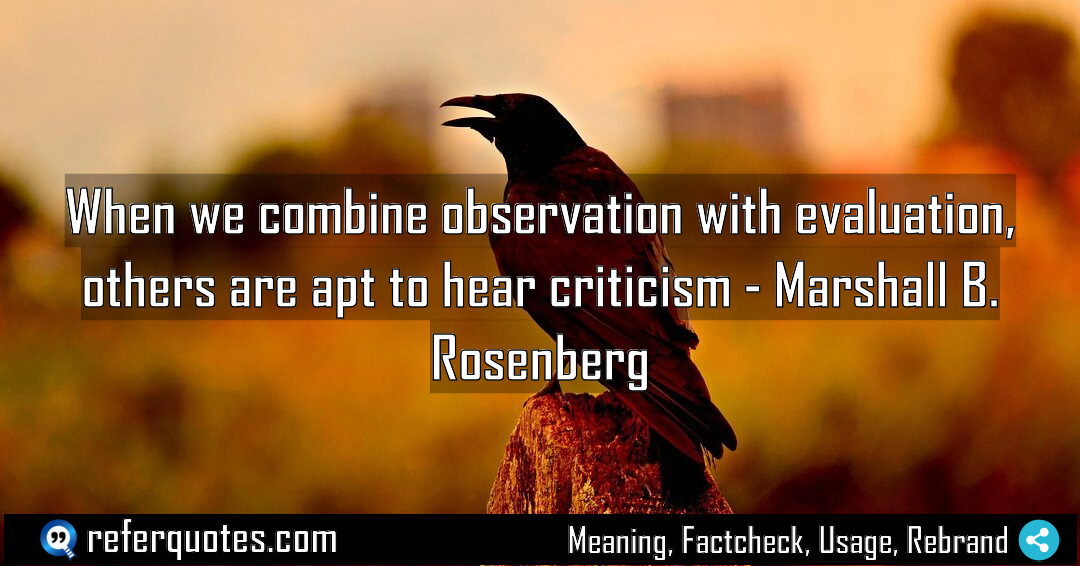When we combine observation with evaluation, we’re basically handing people a reason to get defensive. It’s one of those communication traps that seems logical but backfires constantly. This simple insight from Rosenberg explains why so many well-intentioned conversations go sideways.
Share Image Quote:Table of Contents
Meaning
The core message is brutally simple: mixing what you see with what you judge about it will be heard as an attack, not as information.
Explanation
Let me break this down for you. Our brains are wired to do two things at once: see something and instantly judge it. It’s efficient, right? But in communication, it’s disastrous. When you say “You’re always late to meetings,” you think you’re stating a fact. But the word “always” is the evaluation, the judgment. What the other person hears is “You are irresponsible.” And boom—defensiveness kicks in. The magic of Rosenberg’s work is teaching us to separate the clean observation—”I noticed you arrived at 9:15 for our 9:00 meeting”—from the feeling or need that follows. It’s the difference between starting a conversation and starting a fight.
Quote Summary
| Context | Attributes |
|---|---|
| Original Language | English (3668) |
| Category | Skill (416) |
| Topics | clarity (95), judgment (32), listening (91) |
| Literary Style | concise (408) |
| Emotion / Mood | provocative (175) |
| Overall Quote Score | 70 (55) |
Origin & Factcheck
This concept comes straight from Marshall B. Rosenberg’s seminal 1999 book, “Nonviolent Communication: A Language of Life,” which he developed through his work in the United States. It’s a cornerstone of the NVC model, not just a passing remark. You sometimes see similar ideas misattributed to other communication gurus, but this is pure, foundational Rosenberg.
Attribution Summary
| Context | Attributes |
|---|---|
| Author | Marshall B. Rosenberg (190) |
| Source Type | Book (4032) |
| Source/Book Name | Nonviolent Communication: A Language of Life (55) |
| Origin Timeperiod | Contemporary (1615) |
| Original Language | English (3668) |
| Authenticity | Verified (4032) |
Where is this quotation located?
| Quotation | When we combine observation with evaluation, others are apt to hear criticism |
| Book Details | Publication Year: 1999; ISBN: 9781892005038; Last edition: 3rd Edition (2015); Number of pages: 264. |
| Where is it? | Chapter 2: Observing Without Evaluating, Page 32 (2015 edition) |
